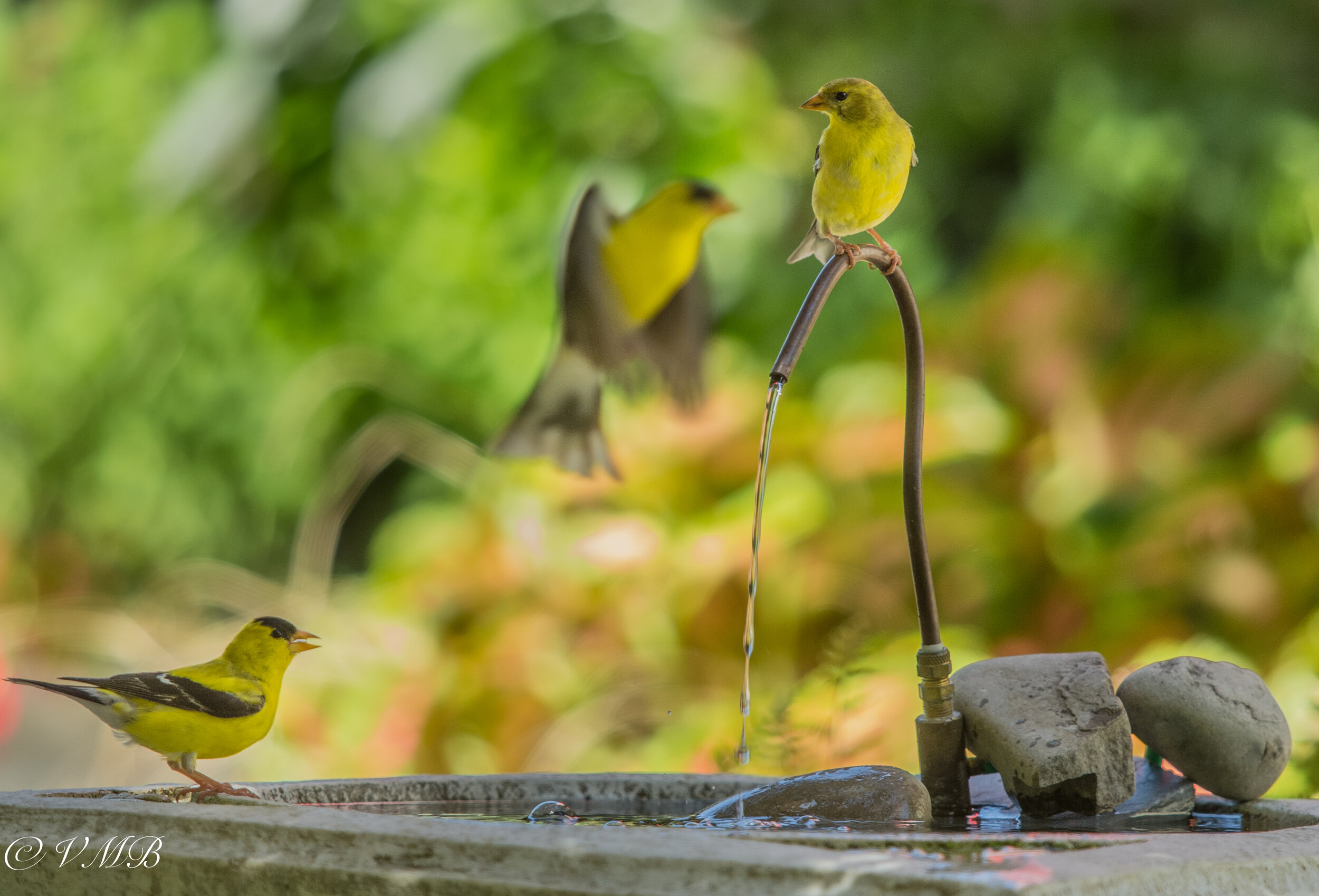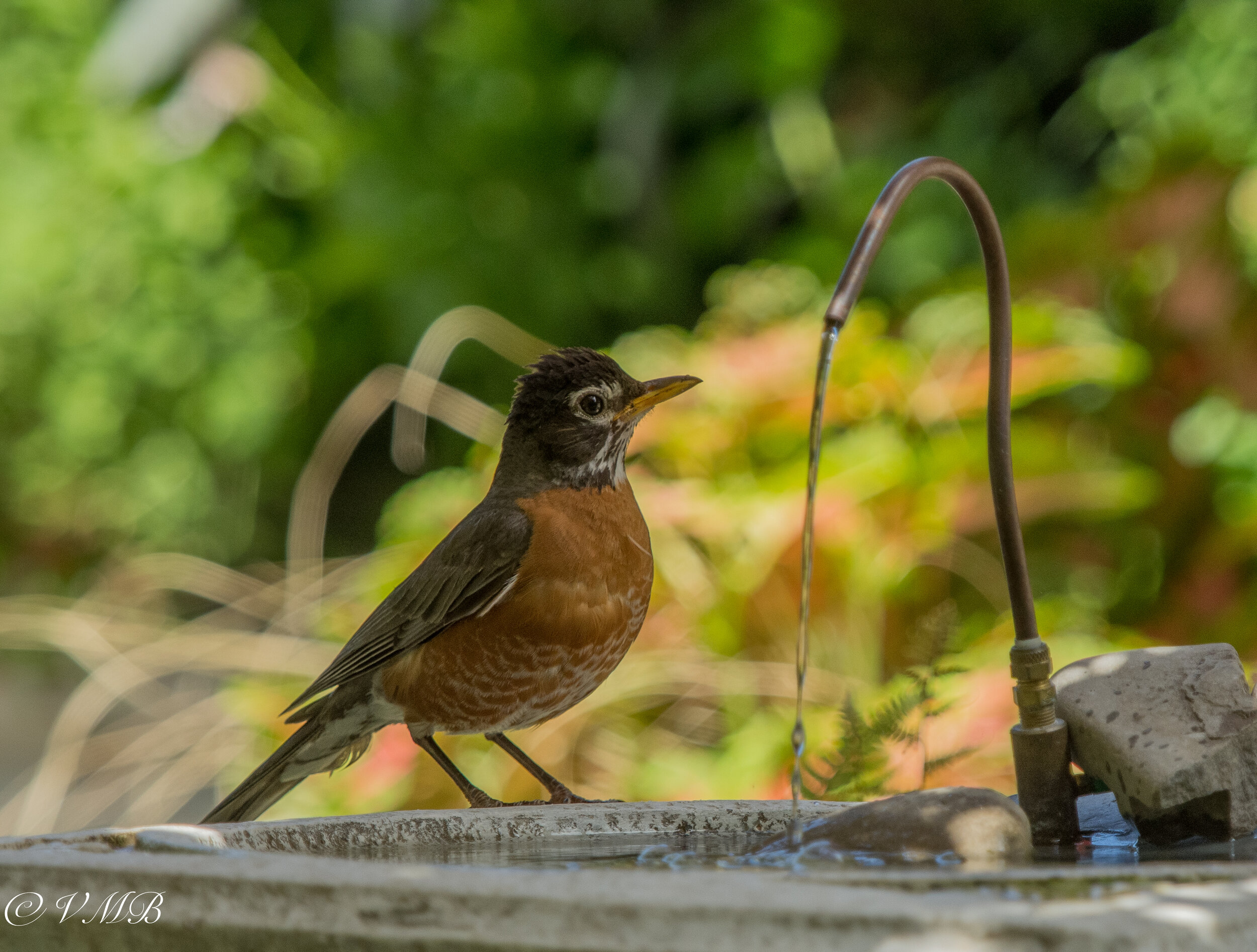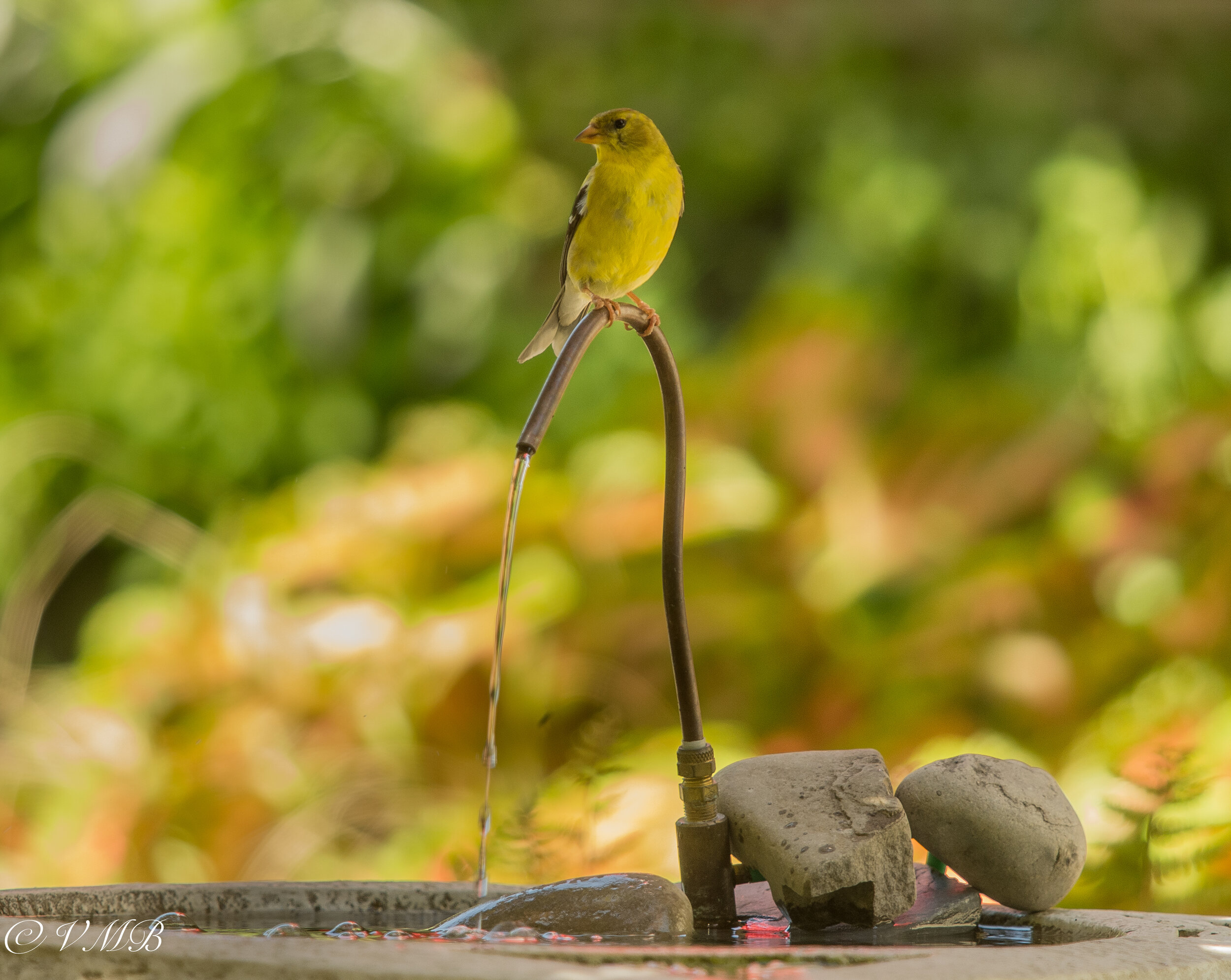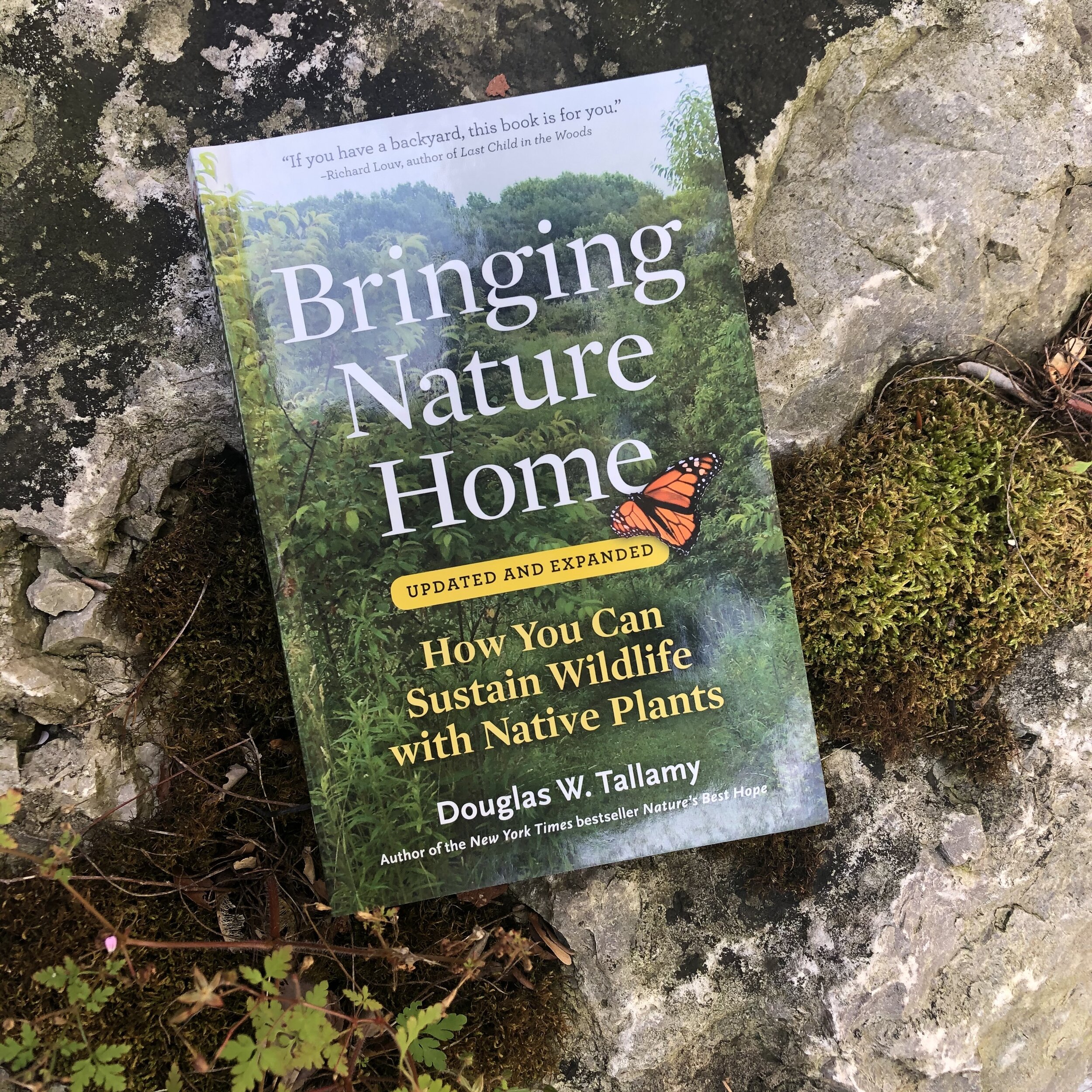DIY: A solar drip for the birds
Converting a rarely used bird bath dripper into a solar powered fountain that is used daily, is a simple, DIY project that will please both the birds and the birdwatchers.
Turn a bird bath dripper into a solar-powered fountain birds will love
Birds love moving water and a drip, drop is about as good as it gets for them.
So, when I saw a nice copper bird bath dripper on Kijiji this spring, I jumped on it. The dripper was very high quality and I couldn’t pass it up. A copper drip tube attached to a lovely piece of slate with brass hose fittings.
It just doesn’t get any better than that.
Fast forward to this fall. Back on Kijiji looking for a cheap plastic bird bath to use this winter with an electric heater to provide water for our winged visitors throughout the freezing Southern Ontario winter, and … there it was. A magnificent copper bird bath for a very reasonable price. I remember saying to my wife that “someone in Toronto was going to get a great deal on a used copper bird bath.”
The converted dripper that operates as a solar-powered recirculating pump is certainly a treat for the Goldfinches in the garden.
The cheap plastic bird bath turned out to be an expensive copper one but I couldn’t be happier. The next morning I was on my way to Toronto (about a one-hour drive) to pick up the birdbath. To help justifiy the two-hour return trip, I combined it with a grocery delivery to my daughter who, it turned out, lived just 10 minutes from my prized bird bath.
Keeping an eye open for bird baths, bird houses and bird feeders on your favourite on-line used marketplace sites like Kijiji or Craigslist is a good way to get started with backyard birding or just to upgrade or add to your baths, houses and feeders.
Besides scoring the copper bird bath, I decided to do a slight hack on my already converted dripper to use it with the new bird bath.
For more suggestions and some of my favourite garden things, be sure to check out my Favourite Things post.
Although birds love drippers, the units need to be hooked up to a hose that needs to be left on while the amount of water is controlled to the point where just a drip at a time falls into the birdbath. Eventually, though, if left on and unattended, the bird bath overfills and drips over the edge potentially flooding an area.
I tried to make it work. I really did. Set up a nice deep bird bath that actually had a small leak. So it could handle the constant dripping without really overflowing. Trying to get the right flow was a pain and remembering to turn it off added to my frustration.
If only I could convert it to a recirculating dripper or even use it like a fountain.
Once I got the idea, it didn’t take long to convert the dripper to a solar powered unit. It’s no longer a “dripper” but that doesn’t matter because it is recirculating the water in the birdbath rather than adding to it.
The original dripper unit came with a very long, thin rubber hose that connected to the hose faucet. By cutting that into a short (maybe 6-inch) hose and connecting that to the pump’s outlet via one of the alternative fountain heads provided by the solar pump, the unit works even better than expected.
A robin takes a drink from the bird bath with the solar-powered fountain.
When the sun was out, it provided birds with a gentle flow of water recirculated from the bath itself.
This approach worked well but a small problem emerged. Trying to keep water levels high enough so that the small solar pump stayed below water became a daily concern.
The combination of birds using the bird bath, evaporation and some splashing caused by the fountain, created a daily water loss that meant constant monitoring of water levels. Everyday the water had to be topped up for fear of the bird bath running too low on water and potentially ruining the pump.
So, a small change to the original dripper conversion should work well with the new bird bath and its new location. By hiding a large bucket of water near the copper bird bath and sinking the solar pump to the bottom of the bucket, there is no fear of running the pump dry. On sunny days the bird bath will likely overflow a little but it’s placed in an area that does not get a full day of sun and will benefit from access water. A little overflow on sunny days will help to keep the water fresh and the bird bath full. In addition, I can’t help but think that it might be the perfect place to grow a thick carpet of moss around the birdbath where the access water will fall.
We set up the new bird bath and dripper/fountain right outside our family room French door to give us a window into the woodland and our keep an eye on the action at the bird bath. I’ll report back on how it’s working and how much the birds are loving it. It’s always a good idea to place feeders and bird baths so that you can watch them from inside your home. Read my blog on “A window into your woodland,” here.
I want to put a real plug in for these small, inexpensive solar-powered recirculating water pumps. This will be the third solar pump I’m using in the garden and I expect to put an order in for another one. There are so many uses for these small pumps. They come with a number of different fountain heads from a single stream of water to a gentle multi-stream fountain that would be perfect for hummingbirds who like to play in gentle streaming fountains.
A quick look on YouTube under “small solar fountain” turns up numerous DIY projects.
Definitely worth trying out.
For more on Building your Garden on a Budget, check out my earlier in-depth article here.
Consider installing a high-end, off-grid solar power system
If you are like me and don’t have electricity in your garden, or at least don’t have it in the far reaches of the garden, consider installing a complete off-grid solar-powered electrical system like the American-based Shop Solar Kit company.
Maybe you have a pergola in the back of the garden, or even a she-shed that you would like to have full power running a small refrigerator, sound system or full-size lamps and lighting. If you need to run pumps and lighting to a garden pond, you can do it with one of these highly capable systems that, once installed, operate at no cost to you at all.
There are complete DIY kits available for approximately $1,500 and up.
Gardening on a budget links
Ten money-saving tips for the weekend gardener
DIY Bark Butter feeder for Woodpeckers
DIY reflection pond for photography
Click & Grow is ideal for Native Plants from seed
Remove your turf and save money
Hiring students to get your garden in shape
If you are interested in backyard birds, please consider signing up for my backyard birds newsletter. The sign-up page is at the bottom of my homepage. Not only will the newsletter provide in-depth articles on attracting, feeding and photographing backyard birds, I am also working with local artisans to provide discounts on incredible bird-related feeders, houses and other goodies backyard birders will love. In addition there will be regular giveaways , including gardening books and birding items.
Going Native: Saving nature one backyard at a time
Bringing Nature Home is a book every gardener needs to read. The book is a rich resource for woodland gardeners looking to better understand the importance of native plants in our environment and the dangers of using exotics. It is a comprehensive blueprint for how gardeners can use native plants to sustain wildlife
Bringing Nature Home: Sustaining wildlife with Native Plants
There is plenty to be optimistic about in Douglas Tallamy’s book, Bringing Nature Home and it all begins with the importance of planting native plants, trees and shrubs in our gardens.
But finding this optimism is not easy.
For my extensive article on why using native plants in your garden is important, go here.
Tallamy tells the truth and it’s a truth that will make most gardeners very uncomfortable about what we’ve planted in the past and what is now happily growing in our gardens right now.
The must-have ornamentals, the pest-resistant perennials and the trees and shrubs we probably never suspected were problematic in the landscape are creating the conditions for the slow but steady decline not only of native plants but the entire ecosystem that depend on them for survival.
Scary stuff for sure, but critical reading for anyone who cares about the environment and what awaits future generations.
Remember, I said there’s lots to be optimistic about in the book. It’s important to note that the its full title is “Bringing Nature Home. How You Can Sustain Wildlife with Native Plants.” The book proves to be a rich resource for combating the incredible damage we have inflicted on our land and the wilder places that surround us.
For more on the importance of oak trees in our garden and natural landscapes take a few moments to check out my other posts on Oak trees:
This recent book release is an updated and expanded version of the same book that was first published in 2007.
Tallamy goes to great lengths in the opening chapters to explain the enormous problems we face following the slow and steady introductions of exotic, alien plants, pests and disease brought to North America – sometimes by mistake but often through the nursery trade. The problem these exotic ornamentals bring are twofold: One, they fail to deliver the same nutritional benefits to our insects as native plants, and; Two: many of these alien plants have displaced once dominant native plants in our gardens and in the wild.
The result is devastating to a host of native insects, reptiles, animals and birds.
How we can restore native habitats
Tallamy concludes that all the points in his book converge in a common theme: “we humans have disrupted natural habitats in so many ways that the future of our nation’s biodiversity is dim unless we start to share the places in which we live – our cities and, to an even greater extent, our suburbs – with the plants and animals that evolved there. Because life is fuelled by the energy captured by the sun by plants, it will be the plants that we use in our gardens that determine what nature will be like 10, 20, and 50 years from now.”
He goes on to explain that if gardeners continue to “landscape predominantly with alien plants that are toxic to insects…. We may witness extinction on a scale that exceeds” anything ever experienced on this earth.
Tallamy recognizes that it is probably too late to turn back time and completely eliminate the alien plants either from our gardens or from wild places, but it’s not too late to use our gardens – big or small – to create islands of native-plant sanctuaries to give native fauna a chance to recover. One small island in suburbia will not solve the problem, so Tallamy encourages readers to recruit neighbours, maybe even entire neighbourhoods to transition from exotic to native plantings.
He goes into great detail to help readers recognize the benefits of using natives over exotics, even listing the best native trees and plants to use in the garden (broken down by zones). Not only does he list the trees and plants, but he includes scientific numbers on how many Lepidoptera species benefit from individual trees. For example, Oak trees rank first supporting 534 species, willows are second supporting 456, followed by Cherry/plum at 456 and birch at 413.
Tallamy speaks with great authority. He is a professor in the Department of Entomology and Wildlife Ecology at the University of Delaware, where he has authored 97 research publications and has taught insect related courses for more than 40 years. Using this knowledge, he provides valuable information on every insect and spider you might come across in the garden.
It would be easy to think this is a book for environmentalists, but it really is a book for gardeners. There are even sketches on how to use native plants in the garden to benefit our native wildlife.
For woodland gardeners, many of whom already recognize the importance of using native trees, shrubs and plants, the book helps to validate what you are already doing. For those who have not given a lot of thought to the potential damage exotics create in the environment, the book will get you to question many of your existing beliefs and garden aesthetics.
No matter where you stand, this book – not unlike Mary Reynolds’ book “The Garden Awakening: Designs to Nurture Our Land and Ourselves – will force you to rethink how you garden. Together, they form a powerful voice calling for major changes to suburban gardens away from landscapes dominated by large swaths of non-native grass and exotics, to mass planting of native trees, shrubs, plants and grasses.
It’s a voice gardeners and garden designers need to listen to, need to act on and need to convince others to act on.
Our children deserve a chance to enjoy the birds, butterflies and insects as much as we did growing up.
In addition to Mary Reynold’s book, The Garden Awakening” mentioned above, I have written a number of posts that relate to the subject of native plants. Here are just a few readers may want to explore further. Woodland Nurseries gardeners need to know about . So You Got Perfect Grass: That Don’t Impress me much.
This beautiful, 358-page soft-cover book was provided to me by the good folks at Timber Press for review. It is an outstanding resource for any gardener intent on creating a healthy backyard habitat for birds, butterflies, insects and mammals. The New York Times best seller has been praised by all who take the time to explore it. Writes The New York Tmes: “Tallamy’s message is loud and clear: gardeners could slow the rate of extinction by planting natives in their yards.”
William Cullinar, Director of Horticultural Research for the New England Wild Flower Society, writes “We all hear that insects and animals depend on plants, but in Bringing Nature Home, Douglas Tallamy presents a powerful and compelling illustration of how the choices we make as gardeners can profoundly impact the diversity of life in our yards, towns and on our planet. This important work should be required reading for anyone who ever put shovel to earth.
• If you are considering creating a meadow in your front or backyard, be sure to check out The Making of a Meadow post for a landscape designer’s take on making a meadow in her own front yard.
More links to my articles on native plants
Why picking native wildflowers is wrong
Serviceberry the perfect native tree for the garden
The Mayapple: Native plant worth exploring
Three spring native wildflowers for the garden
A western source for native plants
Native plants source in Ontario
The Eastern columbine native plant for spring
Three native understory trees for Carolinian zone gardeners
Ecological gardening and native plants
Eastern White Pine is for the birds
Native viburnums are ideal to attract birds
The Carolinian Zone in Canada and the United States
Dogwoods for the woodland wildlife garden
Bringing Nature Home by Douglas Tellamy
A little Love for the Black-Eyed Susan
Native moss in our gardens






